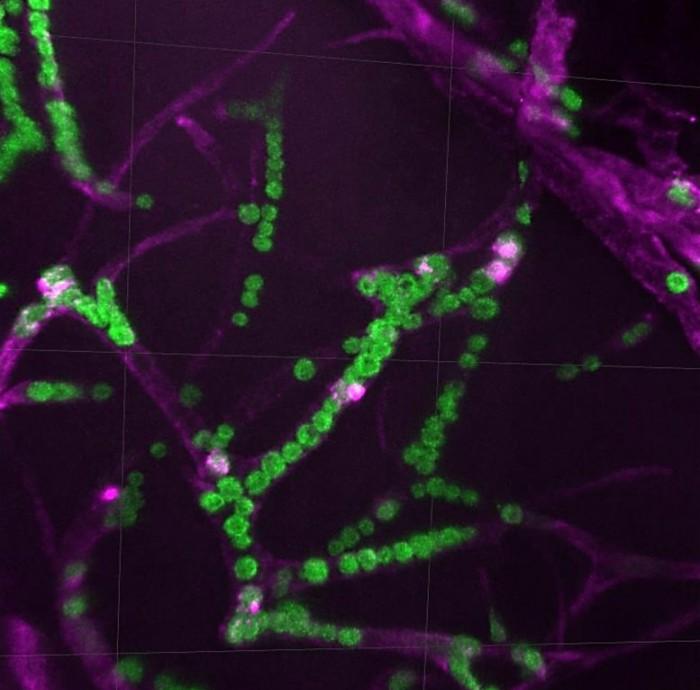According to foreign media reports, amphibian frogs have many breathing techniques throughout their lives – through gills, lungs and skin. Now, German scientists have developed another method to supply oxygen by introducing seaweed into the tadpole's bloodstream, allowing tadpoles to "breathe." According to the new study, published Oct. 13 in the journal iScience, the scientists say the method provides enough oxygen to effectively rescue neurons in the brains of hypoxic tadpoles.

Senior author Hans Straka of the University of Munich said: "Seaweed actually produces so much oxygen that they can rejuvenate nerve cells, if you will. To many, this sounds like science fiction, but after all, it's just the right combination of biological planning and biological principles. ”
Straka was studying oxygen consumption in the brains of Xenopus laevis tadpoles when his lunch conversation with a botanist sparked an idea that combined plant physiology with neuroscience: harnessing the power of photosynthesis to provide oxygen to nerve cells. The idea doesn't seem far-fetched. In nature, algae live harmoniously in sponges, corals and sea anemones, providing them with oxygen and even nutrients. Why can't they provide oxygen to vertebrates like frogs?
To explore this possibility, the team injected green algae, or cyanobacteria, into the tadpole's heart. With each heartbeat, the algae peristalsis through the blood vessels and eventually reach the brain, turning the translucent tadpole bright green. Light is applied to these tadpoles, prompting both algae species to pump oxygen to nearby cells.
After distributing the seaweed to the brain, the researchers isolated the tadpole's head and placed it in an oxygen bubble bath containing the necessary nutrients to maintain the cell's function, allowing the team to monitor neural activity and oxygen levels. When the researchers ran out of oxygen in the bath, the nerves stopped beating and fell silent. However, the head of the illuminated tadpole restarted neural activity within 15 to 20 minutes, which is about twice as fast as replenishing oxygen to the bath without seaweed. The resurrected nerves also performed as well as they did before oxygen ran out, suggesting that the researchers' approach was quick and effective.
"We successfully demonstrated the proof-of-principle experiment of this method. It's amazingly reliable and robust, and in my eyes, a beautiful approach," Straka said. "Working in principle doesn't really mean you can apply it at the end, but it's the first step in starting other studies."
While the researchers believe their findings could one day lead to new treatments for diseases induced by stroke or hypoxic environments such as underwater and at high altitudes, they are far from ready for seaweed to enter the human bloodstream. The team's next step was to see if the injected seaweed could survive in the live tadpole and continue to produce oxygen without causing an immune response that wreaked havoc on the animals.
Straka also envisions that his research will benefit other labs that use isolated tissues or organs. The introduction of oxyalgae can help these tissues thrive, improve their survival rates, and potentially reduce the need for live animals in experiments.
"You have to have new ideas and new concepts to explore; that's one of the ways science drives it," Straka said. "If you open up ideas, all of a sudden, you can see all the possibilities in one idea."